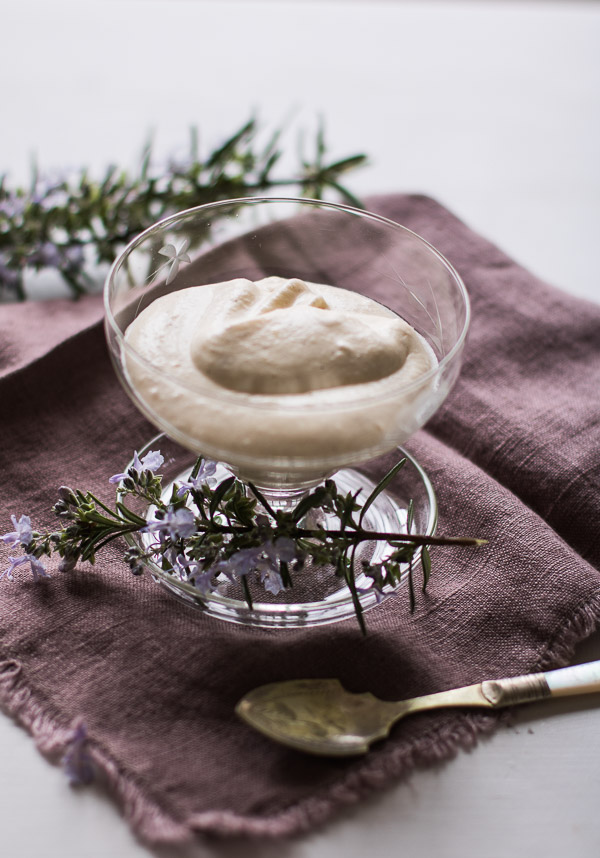
Syllabub is the kind of dessert you need to serve without explanation, just for the sheer satisfaction of saying its name when your guests ask what it is. Elizabeth David starts her booklet on Syllabubs and Fruit Fools thus,
“It was Herbert Beerbohm Tree’s wedding day. His half-brother Max had been called in to act as best man in place of his real brother who had vanished in Spain. At the celebration breakfast, there were syllabubs. Herbert was beguiled by the rhythm of the name. The date was 1882, and syllabub, added Max, was his favorite dish.”
Syllabub is the kind of dessert that would have been perfect in any dinner scene of Downton Abbey. It’s decadent, boozy and delicate all at the same time; a fitting tribute to the late Victorian era, but its pedigree goes as far back as the 16th century. It was originally a drink that was sipped through a pipe at the bottom of a custom made syllabub cup. Wine and cream were whipped together and left to separate so the wine at the bottom of the cup could be sipped, and the cream on top eaten separately with a spoon. During the second half of the eighteenth century, the quantity of wine was reduced, allowing the cream to be whipped into a thicker consistency that didn’t separate, subsequently creating what’s now known as an everlasting syllabub.
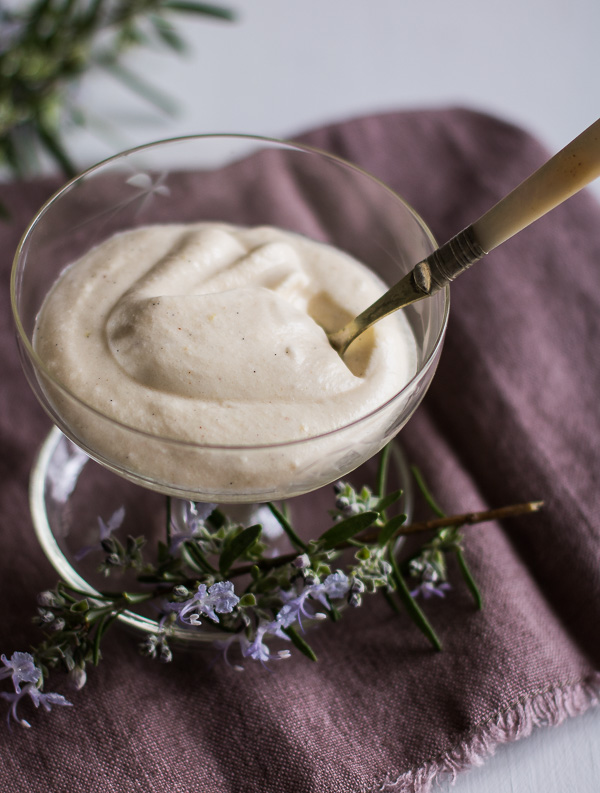
The trick when making Syllabub is timing. If you whip the cream for one second too long the lemon juice and alcohol will cause it to curdle, but with the exception of a little attention to detail, it’s a really simple dessert, particularly if you’re aiming for some fuss-free entertaining. It can be prepared in advance, scooped into delicate little glass cups and left in the fridge. When you’re ready to serve, simply garnish with a traditional sprig of rosemary, and if you’re serving it in January like I am, you’ll get the added bonus of delicate mauve rosemary flowers to add some colour to an otherwise dull winter’s day.

Winter’s morning on the CM gin and tonic terrace
This recipe is loosely based on Elizabeth David’s version of everlasting syllabub. Like her’s, it uses fresh lemon juice and zest, which is a lovely palette cleanser and a zingy pick me up in the depths of winter. I use vanilla seeds and freshly grated nutmeg, which add a lovely warmth to balance the lemon’s acidity. Don’t be tempted to skip the steeping of the alcohol and lemon (juice and rind). It really does make a difference to the depth of flavor. You can use any sherry or white wine to make syllabub but I like to use our local Jurancon doux; a beautiful sweet wine made from late-picked grapes grown in the lush foothills of the Pyrenees.
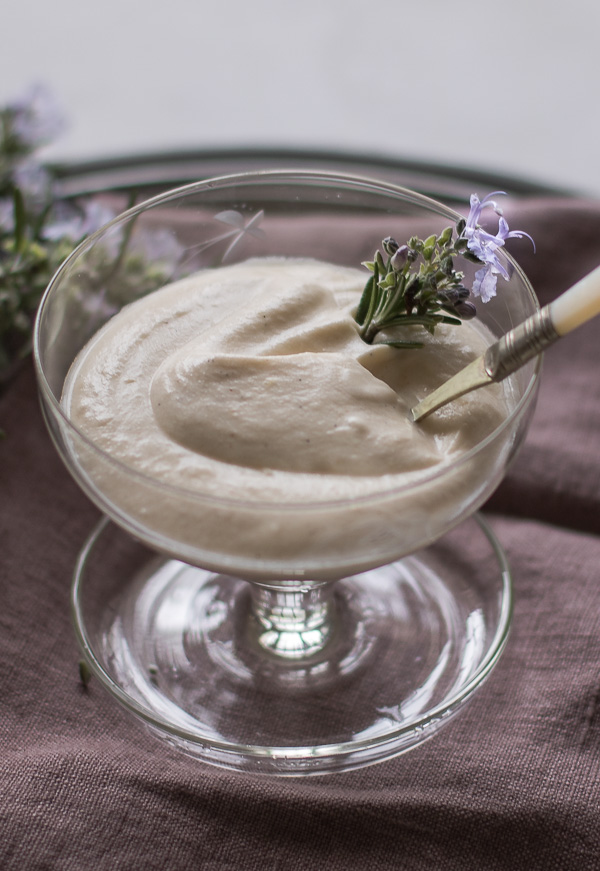

Sunrise from the CM kitchen
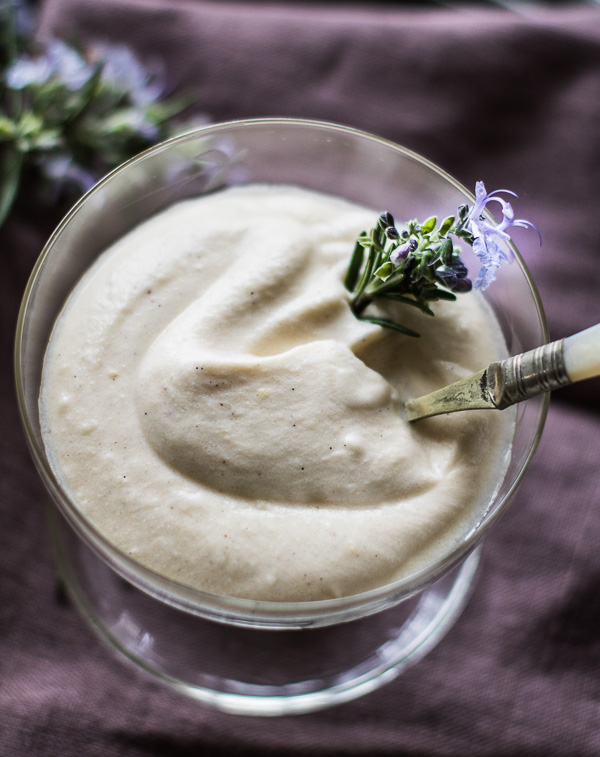
Last weekend was a typical wet winter’s weekend, meant only for cooking, conversation and cuddling up by the fire. Here’s the playlist we were listening to—it’s just the kind of slow contemplative music to empty a bowl of syllabub to whilst you flick through a pile of recipe books and dream of warmer sunny days to come.
Syllabub Recipe
Ingredients
-
300ml double cream
-
100ml sweet white wine or sherry (choose one you enjoy drinking)
-
2 tablespoons sugar (adjust based on your sweetness preference)
-
1 tablespoon lemon juice (freshly squeezed)
-
Zest of 1 lemon
-
1 teaspoon vanilla extract (optional)
-
Fresh mint leaves or grated nutmeg (for garnish, optional)
Method
-
Prepare the Wine Mixture:
-
In a small bowl, combine the sweet wine or sherry, sugar, lemon juice, and lemon zest. Stir gently until the sugar dissolves completely. Set aside.
-
-
Whisk the Cream:
-
In a separate large mixing bowl, whisk the double cream until it forms soft peaks. You can do this by hand with a whisk or using an electric mixer on medium speed.
-
-
Combine the Mixtures:
-
Slowly pour the wine mixture into the whipped cream while gently folding it in with a spatula or whisk. Be careful not to deflate the cream; fold it just until fully combined.
-
-
Chill the Syllabub:
-
Spoon the syllabub into individual serving glasses or bowls. Refrigerate for at least 2 hours, or preferably overnight, to allow the flavours to meld and the cream to set.
-
-
Serve:
-
Before serving, garnish with a sprig of mint leaves, a dusting of grated nutmeg, or even a few additional lemon zest curls for extra flavour.
-
Optional Variations:
-
Fruit Addition: For added texture and flavour, top with fresh berries like raspberries or strawberries before serving.
-
Flavoured Alcohol: You can substitute the wine or sherry with other types of fortified wine, such as Madeira or Marsala, for a different twist on the classic recipe.
Syllabub is a wonderfully creamy, slightly boozy dessert that’s perfect for a summer garden party or a cosy winter gathering.
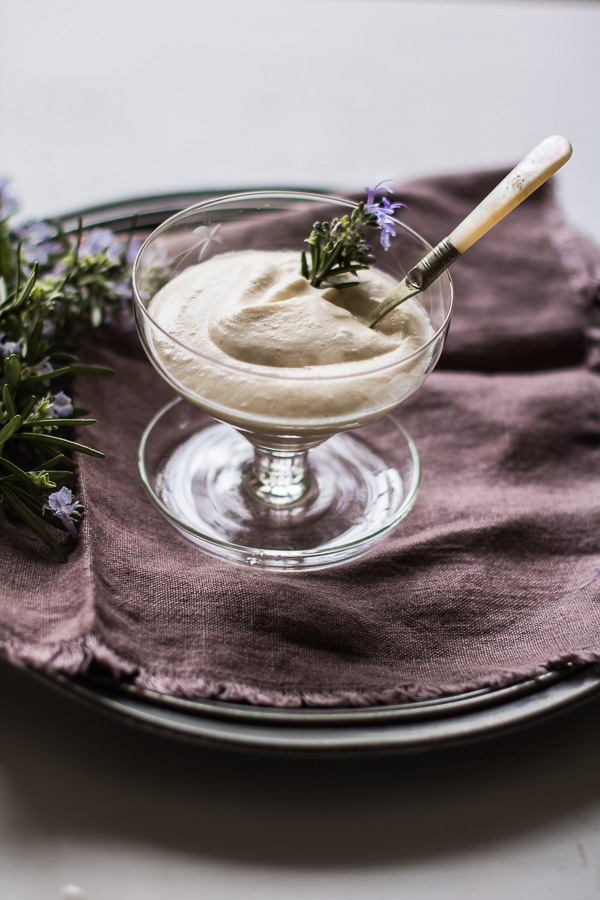

+ ADD A COMMENT